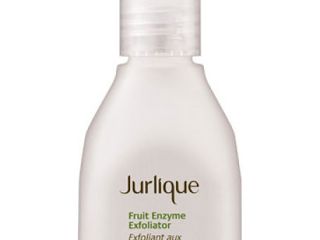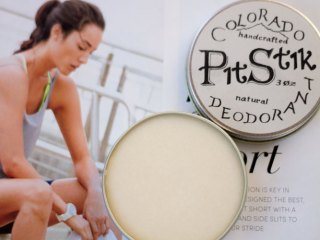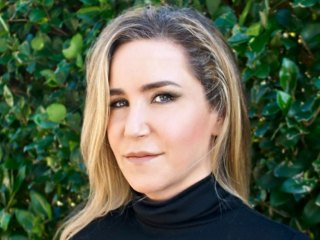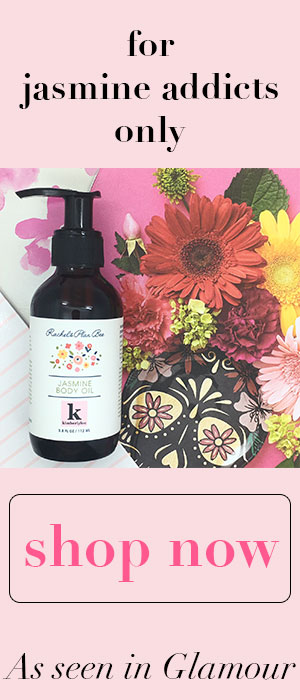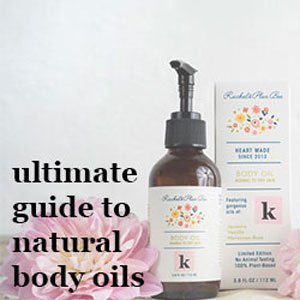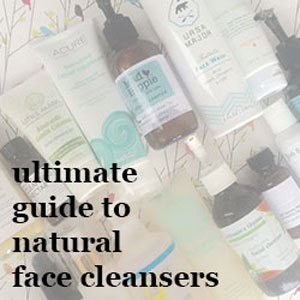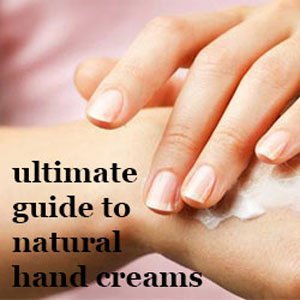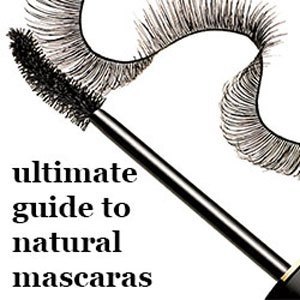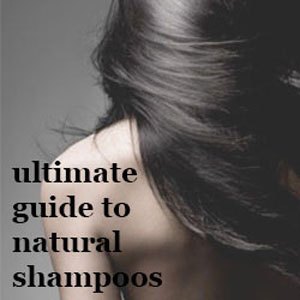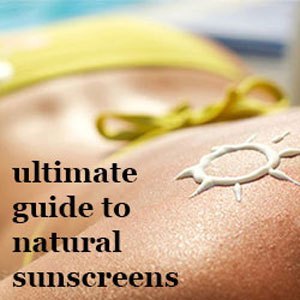One of my secrets to healthy skin isn’t a secret at all, really. It’s just common sense.
Be proactive.
When I saw on my local Whole Foods’ Facebook page that the Whole Body department was offering free Visia Complexion Analyses on Saturdays, I jumped at the chance to book an appointment. (These analyses typically cost $200 at the doc’s office!)
If you’re unfamiliar with the Visia Complexion Analysis system, it’s basically a cool imaging machine that captures eight different points of your skin’s overall health, including:
- Visible Spots (Skin irregularities that appear on the surface of the skin — freckles, scars, age spots or blemishes)
- Wrinkles (A result of the aging process and most common around the eyes and mouth)
- Texture (High and low points of the skin — blue points show skin indentations; yellow areas are raised points)
- Pores (Small openings dispersed throughout the skin)
- UV Spots (Sun damage and spots on the surface and in the deep layers of the skin)
- Brown Spots (Skin discolorations including localized hyperpigmentation, under eye shadowing and moles)
- Red Areas (Redness caused by broken capillaries, Rosacea, inflammation or the aftermath of breakouts)
- Porphyrins (Naturally occurring bacteria that can become lodged in pores and lead to breakouts)
After you give the skin care consultant your name and age (so you can be compared within your age percentile), you sit down and place your chin on a rest inside this little white bubble — kind of like you do when you get your eyes checked, except you close your eyes in this case and have a picure taken on one side of your face.
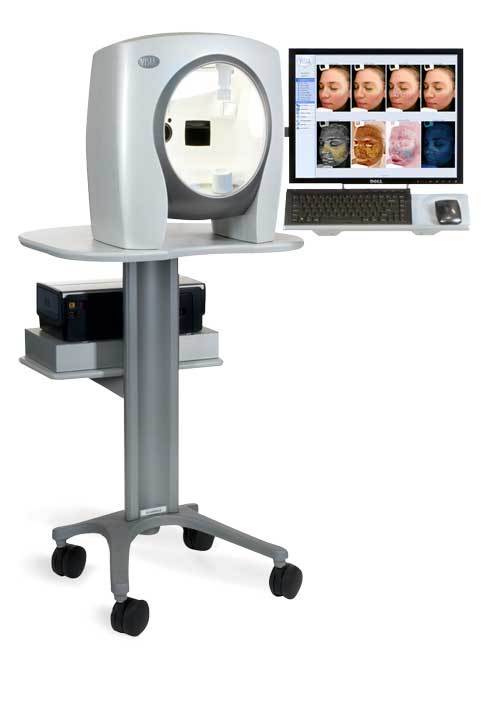
{This is what the Visia Complexion Analysis machine looks like — nothing crazy at all, just sit and rest your chin for a quick picture! Photo Courtesy MyChelle Dermaceuticals}
The whole imaging process takes something like a minute, and then you get some cool pictures and results in each of these areas. Your skin care consultant — usually a licensed aesthetician or cosmetologist — will go through the results with you.
She’ll make great product recommendations for you based on your scores for each of the eight points (scores are based on your age, sex and skin type and are out of 100 — you want your scores as high as possible).
I found that my consultant was extremely insightful and not pushy about product purchases at all — she even gave me several samples to test so I could see if I wanted to come back to purchase them!
So, what did I learn from my Visia Complexion Analysis? Behold — my scores:
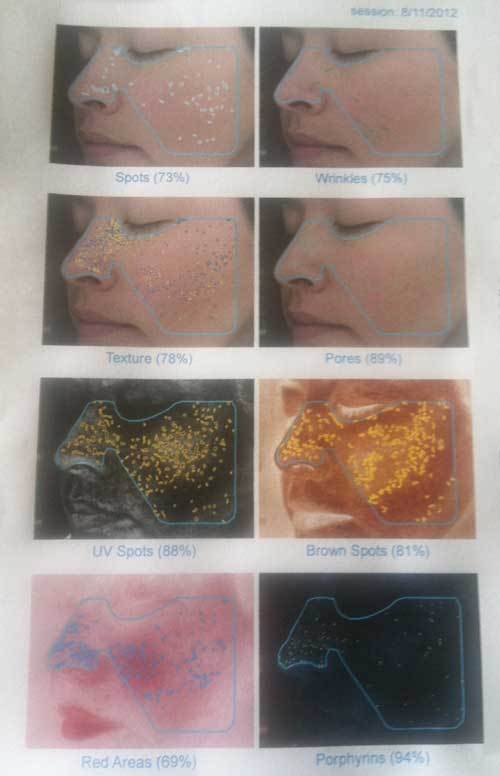
{Seeing myself in different lights — literally — opened my eyes to all the things I should be considering in my daily skin care routine.}
- Visible Spots 73%
- Wrinkles 75%
- Texture 78%
- Pores 89%
- UV Spots 88%
- Brown Spots 81%
- Red Areas 69%
- Porphyrins 84%
While my skin care consultant told me my scores looked great for my age and skin type, she did point out that my redness score (69%), texture score (73%) and my wrinkles score (75%) could easily be amped up with some small improvements in my skin care routine.
First, the redness score. As you can probably tell, I have some red areas highlighted around my nostrils, where I have broken capillaries, and around my cheeks. To help reduce the inflammation in those areas, she recommended (and sent me home with a sample of) Mychelle Perfect C Serum.
This serum, which contains a 17% concentration of vitamin C (dermatologists’ offices typically prescribe vitamin C at 20%), is clinically proven to help to help strengthen collagen and improve skin texture. It also has anti-inflammation properties via Buddleja Plant Stem Cells, which also protect against photo-aging.
I have about three uses of my sample of this serum to test before I decide if I want to shell out the $41 to buy a full size. I’m curious about it because not only is it supposed to help with my inflammation and redness, it can also help tackle my texture issues (78% score) and even out the visible spots (73% score).
Some of the other recommendations she had for me were to:
- Continuously moisturize my skin to improve my wrinkle score, especially the skin around my eyes and on my cheek
- Don’t over-exfoliate/over-scrub my face to help keep natural oils intact, which helps with inflammation and moisture
- Continue to wear sunscreen every day
- Feel free to mix a bit of my facial oils with my daily moisturizers and/or sunscreens for a more hydrating start to my skin’s day
While I only walked out of Whole Foods with one new product (a new Acure mask that can help keep my pores clean and my skin moisturized), I have a list of great recommendations to research (and a few samples to test!) before my next trip to the Whole Body section of Whole Foods.
Speaking of my next trip to the Whole Body department, what’s great about the Visia Complexion Analysis program at Whole Foods is that you can come back as often as you like to see how your skin is faring with the changes you (hopefully) made after your initial visit. I’ll be going back after 30-60 days, depending on when I decide to spring for a few of the products my consultant suggested.
Next time, do you want to join me?
Tell me: Have you ever had a Visia Complexion Analysis (or something similar)? What are your trouble spots on your skin? What are things you do well? Let me know your skin care strategy in the comments section!

